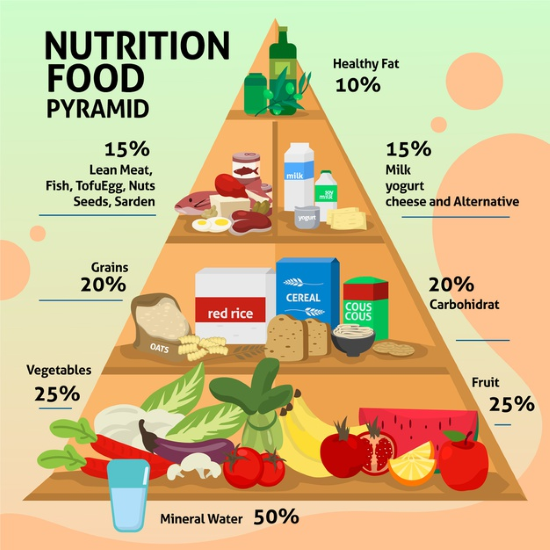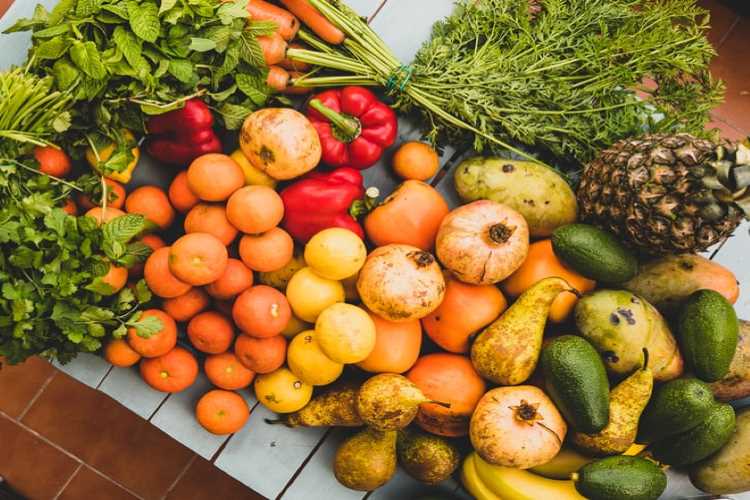Why do we need nutrients?
Studies indicate that a balanced and healthy diet directly influences all areas of a child’s growth and development, but most children tend to be fussy eaters. It’s simple for many parents to imagine a child firmly flinging a piece of broccoli on the floor in disdain. After all, it’s an all-too-common scenario. Regardless of how exhausting it is, you must find methods to persuade your child to eat that piece of broccoli due to the nutrients it provides. This is due to the importance of nutrients in our food.
Learning courses for your kids! Get free trial here
What is the Importance of Nutrients in Our Body?
The link between nutrients, health, and learning is unmistakable: the proper intake of nutrients is one of the three primary variables influencing a child’s development. Because genes and environment are the other two variables, eating a certain meal does not ensure that your child will be smarter. Nonetheless, studies suggest that nutrients in a child’s early years are connected to their health and academic success later in life.
Major Roles of Nutrients
Nutrients are chemicals present in food that drive biological activity and are thus necessary for the human body. They are classified as proteins, lipids, carbohydrates (sugars, dietary fibre), vitamins, and minerals, and they are responsible for the following important tasks.

#1 The process of constructing all bodily components such as muscle, bone, teeth, and blood.
#2 Generating energy (both power and heat).
#3 Maintaining the body in excellent operating condition.
The Nutritional Needs of Kids

Children and teenagers require the proper nutrients to grow, learn, and develop. This implies that your children require meals and beverages high in nutrients but low in calories, fats, and sweets, to build a solid foundation for a healthy life.
Serving tasty, nutrient-rich meals at every meal and snack is the key to feeding a healthy family. Children will naturally have less room for nutrient-poor choices when they load up on the proper things – high-quality nutrients for their bodies and brains (soft drinks, chips, candy, desserts).
Morning, noon, and night, here are some quick and easy ways to offer youngsters high-octane options from every food category:
Protein, Iron, Zinc, and B-Vitamin-Rich Lean Meat, Poultry, Fish, Eggs, Beans, and Nuts

These nutrients are essential for children’s growing muscles and active minds. Getting adequate protein at each meal and snack might help you feel fuller for longer (feeling satisfied after eating).
While most kids consume a lot of protein at lunch and supper, they may not receive enough protein during breakfast or snacks. They can start their day with eggs, bean burritos, or leftovers from the night before. Nuts, peanut butter or other nut butter, hummus or other bean dips with fresh vegetables, and sliced lean turkey are good snacks.
Learning courses for your kids! Get free trial here
Vitamin A and C-rich Fruits and Vegetables, as well as Potassium and Fibre-rich Foods
Fruits and vegetables, whether fresh, frozen, canned, dried or juice, are always a good choice.
Eating more fruits and vegetables at each meal is beneficial to both children and adults’ health. Breakfast should include fresh or frozen berries, slices of melon, or a glass of 100 percent orange juice. Lunch should include crisp baby carrots or sliced apples. Supper should have brilliantly coloured vegetables (broccoli, corn, sliced peppers, frozen peas, or leafy green salad). Juice is a tasty method to acquire nutrients, but it can’t substitute eating entire fruits and veggies, so consume as much as you can.
Carbohydrates, Fiber, B-vitamins, and Other Whole-grain Foods
Whole grains are high in nutrients, and their carbohydrate content offers energy for growing and energetic young bodies. There has been an explosion of new grain products on grocery store shelves in recent years. It’s difficult to choose amongst so many possibilities. Choose goods with whole grains listed first on the ingredient list. Breakfast should consist of whole-grain cereals, sandwiches should consist of kid-friendly “white” whole-wheat bread, snacks should consist of crunchy whole-grain crackers, and supper should consist of whole-grain pasta. Try quick-fix healthful grains like quinoa, whole-wheat couscous, and quick-cooking brown rice alone or combined with other dishes to provide variety.
Main Nutrients in Food: Nutrition Pyramid

# Foundation Layers
The three plant-based food categories make up the foundation layers:
Fruits and Grains Veggies and Legumes
Because plant foods should make up most of our diet (around 70% of what we consume), these levels make up the greatest amount of the Pyramid.
Plant meals are high in vitamins, minerals, and antioxidants, among other nutrients. In our diet, they are also the primary source of carbs and fibre.
Adults, teenagers, and older children should strive for at least 2 servings of fruit and 5 servings of vegetables or legumes each day.
Choose primarily whole grains (brown rice, oats, and quinoa) and wholemeal/wholegrain/high cereal fibs from the grains food group.
Food Categories and Suitable Amount of Consumption
The Layer in the Centre
The milk, yoghurt, cheese, and alternative food categories are in the middle layer, while the lean meat, poultry, fish, eggs, nuts, seeds, and legumes food groups are on the bottom layer.
Milk, yoghurt, cheese, and similar foods are high in calcium, protein, and other vitamins and minerals. Non-dairy alternatives such as soy, rice, or cereal milk that include at least 100mg of additional calcium per 100ml are included in this food category. To minimise extra kilojoules from saturated fat, use reduced-fat versions of these meals.
Our major sources of protein include foods like lean meat, chicken, fish, eggs, nuts, seeds, and legumes. However, each meal has its own set of nutrients, such as iodine, iron, zinc, B12 vitamins, and good fats. From this food group, we should look for a range of meat and non-meat alternatives.
The Topmost Layer
As children require modest amounts of healthy fats daily to maintain heart health and cognitive function, the top layer refers to healthy fats. Children should eat foods that are high in healthy fats rather than meals that are high in saturated and trans fats.
Extra virgin olive oil, nut and seed oils, and other plant-based polyunsaturated and monounsaturated fats are good choices. Limit their saturated fat intake and stay away from trans fats.
Healthy fats are also found in foods from other food categories, such as avocados, nuts, seeds, and seafood, so we only need a little amount from oils and spreads each day.
Conclusion
Just like parents desire the best for their children, Real School Of Montessori likewise prioritises the well-being of children. The Real School Of Montessori offers programmes to assist you in deciding how you can give your child healthy nutrition. They will help you provide a healthy, balanced diet for your child. We at Real School Of Montessori believe in one-on-one online mentoring and innovative solutions through project-based learning. Visit our website and open a world of opportunities and growth for your little one.







